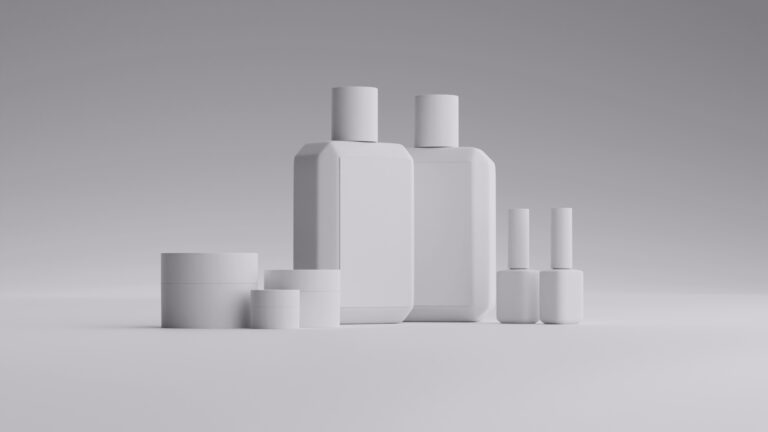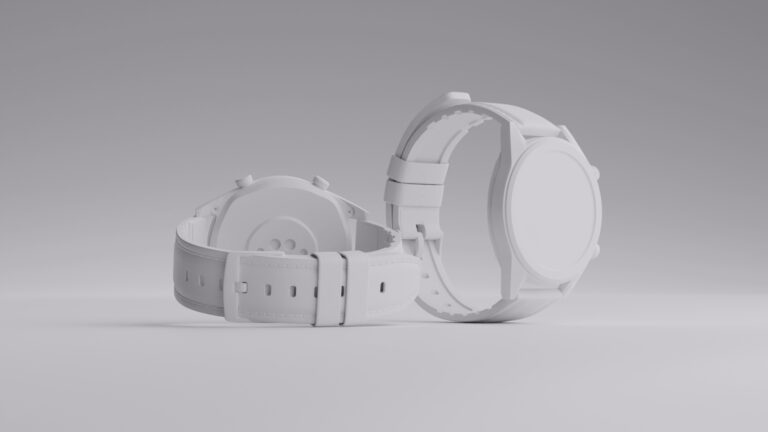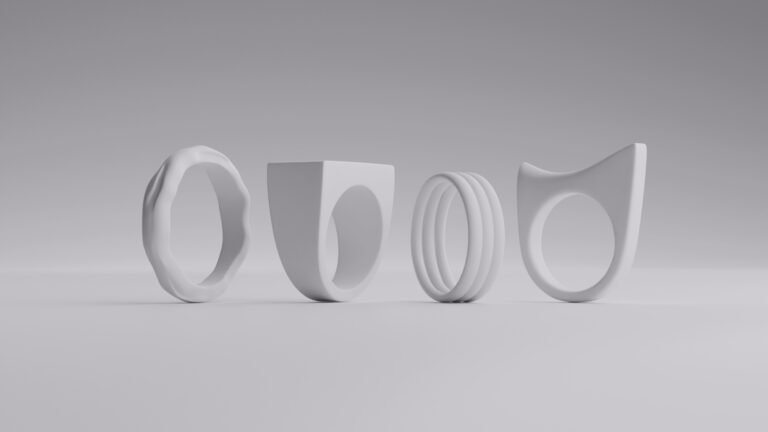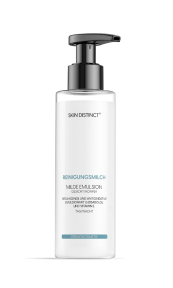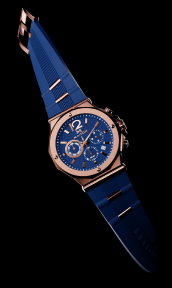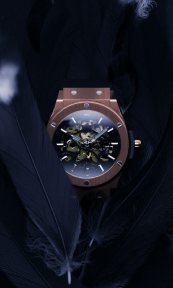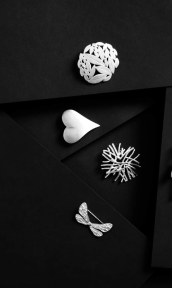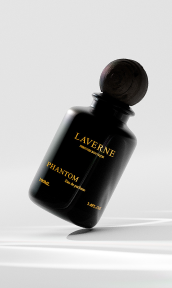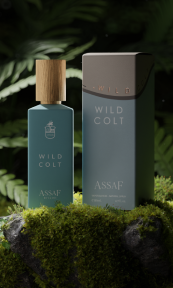The power of a first impression cannot be overstated. When potential customers visit an e-commerce site, the first thing they interact with is not the product description, price, or even customer reviews—it’s the product photo. This visual connection forms the foundation of their shopping experience, influencing how they perceive the product and the brand. Great product photos play a crucial role in boosting conversion rates. Let’s explore why they matter so much and how they impact consumer behavior.
The Importance of First Impressions in Online Shopping

First impressions can differ between a potential customer exploring a product further or abandoning the site altogether. Unlike traditional brick-and-mortar stores, where shoppers can physically interact with products, the online shopping experience is entirely visual. This makes product photos the primary point of contact between the consumer and the brand, and they play a crucial role in shaping the buyer’s perception within seconds.
When a customer visits an e-commerce site, they are often faced with an array of options. With so much competition at their fingertips, customers are quick to make snap judgments. A study by Adobe revealed that it takes only 50 milliseconds for users to form a first impression of a website. During this split second, the visual appeal and quality of product images are key factors in whether a potential buyer decides to continue browsing or exit.
Great product photos immediately catch the eye and encourage further exploration. Conversely, poor-quality images—blurry, pixelated, or poorly lit—signal a lack of care and professionalism, prompting customers to click away, often without even reading the product description or learning about the brand. In this way, product photos serve as the “shop window” of an e-commerce store, inviting potential buyers in for a closer look or deterring them before they ever engage.
Visual Appeal and Emotional Engagement
Humans are visual creatures by nature. More than 90% of the information transmitted to the brain is visual, and our brains process images much faster than text. For online shoppers, the first glance at a product image not only conveys the product’s basic attributes but also triggers emotional responses.
Whether it’s the sleek design of a new gadget, the vibrant colors of a clothing item, or the craftsmanship of handmade goods, a well-presented image can evoke desire, curiosity, or excitement.
A strong emotional connection is a powerful driver in purchasing decisions. Research from HubSpot suggests that 67% of consumers say image quality is “very important” when making purchasing decisions. If the initial product photo sparks positive feelings or meets a buyer’s aesthetic preferences, they are far more likely to explore further, click on the product, and eventually convert.
In contrast, an unattractive or underwhelming image can create a negative emotional response, causing potential customers to lose interest quickly.
Conveying Brand Identity and Professionalism
The quality of product images also reflects directly on the brand’s identity and perceived professionalism. A polished and cohesive visual style across all product photos can convey a sense of consistency and reliability, signaling to shoppers that the business is reputable and takes pride in its offerings. This sense of professionalism is particularly important for newer or lesser-known brands that are still building trust with their audience.
For instance, luxury brands often use high-resolution images with artistic framing and minimal distractions to create a sense of exclusivity and sophistication. This deliberate attention to detail reinforces the high value of their products and builds brand equity. On the other hand, inconsistent, unprofessional, or poorly executed photos can undermine brand credibility, making it harder for businesses to establish trust with new customers.
Differentiating Your Brand in a Crowded Marketplace
With the rise of e-commerce platforms like Amazon, Shopify, and Etsy, the online shopping space has become highly competitive. Shoppers can browse dozens of similar products within minutes. In this crowded marketplace, eye-catching, high-quality product photos can serve as a key differentiator that helps a brand stand out.
The right photos not only showcase the product’s features but also capture its unique selling points, such as superior craftsmanship, innovative design, or high-end materials. This is particularly important for businesses that sell premium products. A well-composed photo can immediately communicate value, setting the product apart from cheaper alternatives and encouraging customers to explore further.
Creating Immediate Trust in a Skeptical Digital Environment
In online shopping, customers are naturally cautious. They can’t physically touch the product, and they may be wary of getting scammed or receiving something that doesn’t match their expectations. This is where the quality of first impressions becomes even more vital. A clean, sharp, and visually appealing product photo helps reassure customers that the product they are viewing is legitimate and of high quality.
Customers also associate high-quality visuals with a smooth, trustworthy shopping experience. When a website presents clear, detailed images that look professionally produced, shoppers are more likely to believe that the business is serious, transparent, and customer-focused. This level of trust is a crucial first step in guiding potential customers from browsing to making a purchase.
The first impression in online shopping begins with the product photo, which acts as the critical point of contact between the customer and the product. A visually appealing, professional, and high-quality image has the power to capture attention, build trust, and communicate value within seconds. In the fiercely competitive world of e-commerce, where customers can quickly navigate away from a site at the click of a button, making that first impression count is essential.
Investing in great product photography is not just about aesthetics; it’s about creating an emotional connection and laying the groundwork for higher conversion rates.
How Product Photos Convey Professionalism, Build Trust, and Enhance the Perceived Value of Products

In the world of online shopping, product photos play a dual role: they not only serve as the first point of interaction between customers and products, but they also help convey professionalism and enhance the perceived value of what’s being sold. When a product photo is well-crafted, it can instill trust in potential buyers, elevate the product’s appeal, and ultimately drive conversions.
This is especially important in e-commerce, where customers can’t physically inspect items and must rely heavily on visual cues to make purchasing decisions.
Conveying Professionalism Through Quality and Consistency
Professionalism is an essential aspect of building trust with online shoppers, and product photos are one of the most direct ways to demonstrate it. High-quality, well-lit images communicate to customers that a brand takes its business seriously and has invested time and resources into showcasing its products.
Crisp, clear photos with proper composition show attention to detail and a commitment to presenting products in the best possible way. This can make a world of difference in the eyes of customers who might otherwise be unsure about the quality of a product or the legitimacy of a brand.
Consistency across product photos is equally important. For example, a brand that uses a uniform background, lighting, and image style across all its products projects an image of reliability and coherence. This visual consistency helps create a sense of professionalism that extends beyond individual products and reflects on the overall brand. In contrast, inconsistent or low-quality images suggest disorganization, lack of attention, or carelessness, which can undermine a brand’s credibility.
Moreover, consistency in photos is not just about aesthetics; it fosters trust. Shoppers expect a seamless and cohesive experience, and professional, uniform images help meet that expectation. Customers are far more likely to trust a brand that provides detailed, high-quality images from multiple angles, giving them a clearer understanding of what they are purchasing.
These subtle visual cues are often the deciding factor in whether a customer trusts enough to buy from a website, especially if they are unfamiliar with the brand.
Enhancing Perceived Value: Why Good Photos Make Products Look More Desirable
Product photos do more than just display an item—they can dramatically enhance its perceived value. The quality of an image can shift how customers feel about a product, making it seem more luxurious, durable, or desirable.
For example, high-resolution images that capture the texture, color accuracy, and intricate details of a product instantly signal superior quality. Shoppers often equate polished, visually appealing photos with premium products, even if the product itself is priced moderately.
Product photography can turn even simple items into something that feels exclusive or high-end. Consider an everyday item like a coffee mug: when photographed with warm lighting, in a lifestyle setting on a beautifully set table, the mug immediately takes on a more desirable, upscale appeal. Without the need for exaggerated descriptions, the image alone elevates its perceived value, making the customer more willing to pay a higher price.
High-quality product photos can also emphasize specific features or benefits that make the product stand out from competitors. Close-up shots highlighting fine craftsmanship, detailed textures, or premium materials can differentiate a product, conveying that it is worth the investment. Lifestyle images that show the product in real-life scenarios not only help customers visualize the product in their own lives but also create an emotional connection that enhances its appeal.
Building Trust Through Transparency and Detail
Transparency is a crucial factor in online shopping, and product photos are the best tool to offer it. Detailed, high-resolution images provide a sense of security for shoppers. When customers can see every angle of a product, including close-ups of important features, they feel more informed and confident in their buying decisions.
This level of transparency reduces the risk of disappointment or unmet expectations, helping to establish trust before the customer ever completes the purchase.
For example, in industries like fashion, showing close-ups of fabric textures, stitching, and true-to-life color accuracy reassures buyers that they are getting what they see. Similarly, in the tech or electronics sector, detailed images of ports, buttons, and the product’s user interface allow customers to verify that the product has the features they need. These visual assurances help alleviate concerns about the product not living up to the description, reducing the chances of dissatisfaction or returns.
In essence, high-quality product photos serve as a visual promise that the product will match customer expectations. When brands invest in good photography, they are signaling to customers that they have nothing to hide and that the product will meet the shopper’s needs, thus building an essential layer of trust.
Professionalism and Perceived Value Lead to Customer Loyalty
Finally, professionalism and enhanced perceived value lead to stronger customer loyalty. When shoppers feel they can trust a brand—thanks to high-quality, transparent, and professional product photos—they are more likely to return for future purchases. Not only do great photos boost the chances of a sale, but they also foster long-term relationships with customers by ensuring a positive and satisfying shopping experience.
For instance, when customers receive a product that matches their expectations based on the photos, they feel more satisfied with their purchase, which increases the likelihood of them leaving positive reviews or recommending the brand to others. By contrast, if the photos were misleading or of poor quality, customers may feel deceived, leading to negative reviews and potential returns.
Product photos are much more than a visual representation of an item—they are a strategic tool that conveys professionalism, builds trust, and enhances the perceived value of the products being sold. High-quality images instill confidence in customers, create a strong first impression, and provide transparency that assures buyers they are making the right choice.
By investing in professional product photography, brands not only increase the likelihood of conversions but also cultivate lasting trust and loyalty among their customer base. In the crowded world of e-commerce, where first impressions matter, great product photos are a key differentiator that drives success.
Reducing Uncertainties and Offering a Clear Understanding

One of the biggest challenges in online shopping is overcoming the inherent uncertainties that arise from the inability to physically inspect a product. Shoppers can’t touch, feel, or try on items, which makes it crucial for businesses to provide detailed product photos that reduce ambiguity and offer a clear understanding of what customers are purchasing. Product photos act as the primary tool for communicating vital information, helping to bridge the gap between the digital and physical worlds.
High-quality product images offer customers a comprehensive view, showing the product from multiple angles and in different contexts. For example, a clothing retailer might showcase an outfit on a model from the front, back, and side, with close-up shots of the fabric and stitching. This allows customers to gauge the fit, texture, and craftsmanship, helping them make an informed decision. Similarly, for tech products, detailed photos of buttons, ports, and user interfaces provide customers with an in-depth understanding of the product’s functionality.
The more visual information customers have, the less uncertainty they feel. Showing products in real-life settings through lifestyle photos also helps customers envision how the product will look or function in their environment. For instance, furniture brands often place their products in styled rooms to give shoppers a better sense of scale and how the items might fit into their homes. By reducing doubts, brands can significantly lower the chances of post-purchase regret, dissatisfaction, or returns.
Furthermore, offering zoom functionality or 360-degree rotating views is an increasingly popular way to provide even more clarity. These features allow shoppers to interact with the product image more dynamically, inspecting intricate details up close or rotating the item to view it from every possible angle. This added layer of interactivity reduces buyer hesitation and increases confidence, leading to higher conversion rates.
The Role of CGI in Offering a Clearer Understanding
In recent years, CGI (Computer-Generated Imagery) has become a valuable tool for online retailers to further reduce uncertainties and provide even greater clarity. CGI allows brands to create hyper-realistic images of products that may not yet exist physically, are difficult to photograph, or need to be showcased in environments that would be challenging or costly to recreate.
One of the major benefits of CGI is its ability to showcase a product with flawless precision. Unlike traditional photography, which can be limited by lighting conditions, angles, or imperfections in the product itself, CGI can generate perfect, lifelike images that highlight key features of a product. This level of control allows brands to present products exactly as they want them to be perceived, making it easier to emphasize important details like texture, color accuracy, and material quality.
CGI is particularly useful for showcasing variations of a product, such as different color options or custom configurations, without the need for photographing each variation separately. For example, an automotive brand can use CGI to display a car in multiple paint colors and interior finishes, all while maintaining perfect consistency in lighting and presentation. This makes it easier for customers to visualize their personalized options and reduces any confusion about the differences between choices.
Moreover, CGI can offer enhanced versatility when demonstrating how a product functions. In industries such as tech or home appliances, where understanding internal mechanisms or functionality is important, CGI can be used to create exploded views or animations that show how a product operates. This added layer of detail not only clarifies the product’s features but also educates customers, empowering them to make confident buying decisions.
In summary, whether through traditional photography or cutting-edge CGI, clear, detailed product visuals are crucial for reducing uncertainties in online shopping. By providing customers with the information they need to fully understand the product, brands can enhance buyer confidence, reduce the risk of returns, and drive higher conversion rates.
The Impact on Conversion Rates

Product photos have a profound impact on conversion rates in e-commerce. Since online shoppers cannot physically interact with products, they heavily rely on visuals to make purchasing decisions. High-quality images not only capture attention but also provide the reassurance customers need to confidently complete a purchase. Research consistently shows that better product visuals lead to higher conversion rates by reducing hesitation, increasing trust, and providing a better understanding of what is being bought.
First Impressions and Immediate Engagement
Product photos are often the first thing customers see when browsing online, making them a crucial factor in grabbing attention. In a sea of competing products, well-lit, sharp, and aesthetically pleasing photos can draw users in and prompt them to explore further. According to research by Justuno, 93% of consumers consider visual appearance to be the key deciding factor in their purchasing decisions. This means that a great first impression through compelling product images can significantly increase the likelihood that a potential customer will click on a product listing and begin the buying journey.
In contrast, low-quality, poorly framed, or unprofessional images can result in immediate disengagement. When customers are faced with unclear visuals or images that don’t accurately represent the product, they are far more likely to abandon the page or seek alternatives, resulting in a missed opportunity for conversion. Ensuring that product images are visually appealing, well-organized, and highly relevant to the product can improve customer engagement and keep them on the site longer, increasing the chances of a sale.
Multiple Images and Higher Engagement
Providing a variety of product photos from multiple angles helps customers visualize the product more fully and feel confident in their decisions. When shoppers can see every aspect of a product—front, back, sides, and close-ups of details—they are less likely to hesitate, as this level of transparency reduces uncertainty about what they are buying. This is particularly important for industries like fashion, home goods, and electronics, where consumers may need to see specific details (such as fabric texture, stitching, or port configurations) before committing to a purchase.
According to a study by Shopify, products that feature multiple high-quality images increase conversion rates by up to 250%. Offering multiple images also allows customers to stay engaged longer, as they spend more time interacting with the product, exploring its features, and imagining how it fits into their life. This increased engagement is directly tied to a higher likelihood of purchase.
Trust, Professionalism, and Reduced Return Rates
Product photos are also instrumental in building trust, which is essential for converting hesitant shoppers. When customers encounter clear, well-photographed images that accurately depict the product, it instills confidence that the product they receive will match their expectations. Professional, high-resolution images signal that a brand cares about the quality of its offerings and is transparent about what customers can expect.
Trust is especially critical for new or less established brands. In a crowded market, shoppers are more likely to purchase a brand that presents itself professionally and provides clear, detailed images. Well-crafted product photos can give smaller or newer brands a competitive edge by leveling the playing field with bigger, more recognized names.
Moreover, when customers know exactly what they are getting, return rates tend to decrease. Clear, accurate images help set proper expectations, reducing the chances of dissatisfaction. Fewer returns mean fewer losses for the retailer and a better overall customer experience, which can lead to repeat purchases and higher customer lifetime value.
The Role of Product Photography in Conversion Optimization
Product photos are not just a tool for showcasing items—they are a critical part of the overall user experience and conversion optimization strategy. E-commerce platforms often integrate product images into other aspects of the shopping experience, such as zoom features, 360-degree views, and interactive elements. These visual aids enhance the decision-making process by giving customers more control over how they view and explore the product.
For example, 360-degree product views allow customers to rotate the item and examine it from all angles, offering a more comprehensive understanding of its appearance and size. This added interactivity has been shown to improve engagement and increase conversion rates. A study by Adobe found that e-commerce sites with 360-degree images saw a 27% higher conversion rate compared to those with static images.
Zoom functionality is another tool that enhances customer trust and decision-making. When shoppers can zoom in on high-resolution photos to examine textures, stitching, or small product details, they gain confidence that the product will meet their expectations. This level of detail can make or break a sale, especially in industries like fashion, jewelry, and home decor, where the intricacies of the product are crucial.
Mobile Optimization and the Importance of Responsive Images
As mobile shopping continues to rise, with an estimated 72.9% of global e-commerce sales expected to come from mobile devices by 2021, product photos must be optimized for both desktop and mobile experiences. Mobile users, who may be shopping on smaller screens, rely even more heavily on clear, sharp images that quickly communicate a product’s features. Brands that don’t optimize their product photos for mobile risk losing conversions, as images that are too small, slow to load, or poorly displayed on mobile screens can frustrate potential buyers and lead them to abandon their purchase.
By ensuring product photos are responsive and load quickly on all devices, brands can keep mobile shoppers engaged and increase the likelihood of conversion.
The impact of product photos on conversion rates cannot be overstated. High-quality images create strong first impressions, build trust, and provide customers with the clarity they need to make confident purchasing decisions. With the right mix of detailed visuals, interactive features, and mobile optimization, product photos can significantly boost engagement, reduce uncertainties, and ultimately drive higher conversion rates. For any e-commerce business, investing in professional product photography is not just an aesthetic choice—it’s a key factor in conversion optimization and business success.
Wrapping up
In the world of e-commerce, great product photos are more than just a visual asset—they are a powerful tool that influences customer behavior, builds trust, and drives sales. By creating a strong first impression, conveying professionalism, enhancing perceived value, and providing a clearer understanding of the product, high-quality photos reduce the uncertainties inherent in online shopping. Ultimately, they play a pivotal role in boosting conversion rates and ensuring customer satisfaction. For any brand aiming to thrive in the competitive world of online retail, investing in great product photography is an investment in success.
FAQ
Why are product photos important in online shopping?
Product photos are crucial because they are the first point of contact between customers and products, influencing first impressions and purchasing decisions.
How do high-quality product photos build trust with customers?
High-quality photos convey professionalism and attention to detail, reassuring customers that the brand is reputable and that the products are of good quality.
What role do product images play in reducing uncertainties for online shoppers?
Detailed product images provide a comprehensive view of the item, helping customers understand its features and reducing the risk of post-purchase regret.
How can product photos enhance the perceived value of a product?
Visually appealing images can make products seem more luxurious or desirable, influencing customers’ willingness to pay a higher price.
What impact do product photos have on conversion rates?
High-quality and engaging product photos can significantly increase conversion rates by attracting attention, building trust, and providing clarity, ultimately encouraging purchases.





